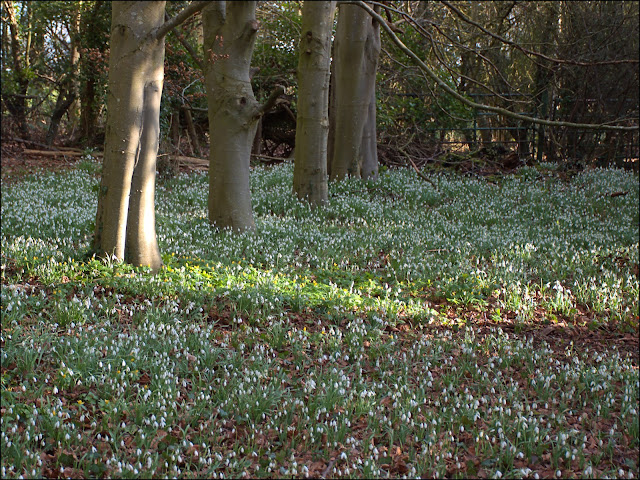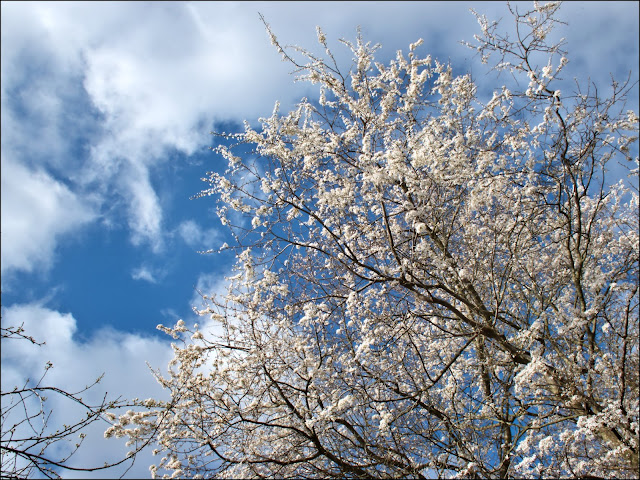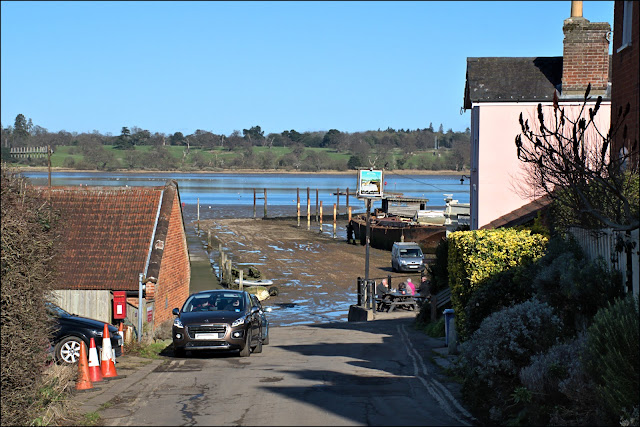"In such ugly times, the only true protest is beauty" - Phil Ochs (1940-1976)
Wandlebury is the site of an Iron Age hill fort but is now a rather pretty area of semi-natural countryside - paddocks, woodland, paths, tracks, orchards and gardens. Being so close to Cambridge it can get crowded on summer weekends, but on Friday mornings in February there's plenty of space to wander.
Large parts of it were once a garden, belonging to the house which was built, with cavalier disregard for the ancient site, right in the middle of the old ring fort. At this time of year it's a great place to see drifts of snowdrops and galaxies of aconites. It comes recommended by my brother who used to park up near here when he should have been delivering office supplies!
First we can dawdle along this field-side track, which was once a road and in fact is still classified as a "highway". It will take us down to the old Roman Road.
There are precious few Roman centurions marching along here today (unless you come on a dark, misty evening when you might still hear the sound of marching sandalled feet). Joggers and dog walkers are here in abundance, as well as the occasional bird-watcher who may be training their binoculars on the flocks of Linnets, or perhaps watching a distant hare.
We return via the cathedral-like space of the beech tree avenue, before making our way to the Banyard Hide, where you can watch the woodland birds on the feeders. There won't be anything super-rare but here's a brief gallery of photos taken on Friday.....
Mr Squirrel is first to put in an appearance....
....on best behaviour today, clearing up under the feeders, rather than trying to knock them down.
The Blue Tit, the most common bird to find on the feeders in your garden, but no less beautiful for that.
Is this my best side?
Or this?
This tiny bundle of fluff is a Long-Tailed Tit. You'll just have to take it from me that it really does have a long tail.
Then we'll complete our journey by returning through the walled garden and the orchard, where the early spring blooms are at their best. Both the snowdrops....
....and the aconites.
In the orchard some of the earliest plum trees were coming into blossom, though this is a very sheltered part of the garden and is noticeably warmer on the chilliest days. We were hoping to see the bright red breasts of the Bullfinch here; they are the fruit farmers enemy as they love to peck away at the first buds of blossom, but here they are welcomed. We did spot a Nuthatch though.
This is the Old Granary. It was rescued from a farm in the village of Tadlow and re-erected here by Cambridge: Past, Present And Future, the charity which manages this site. It would have originally stood on staddle-stones, those mushroom-shaped little pillars designed to keep rats and mice from climbing up and feasting on the grain.
And there we'll end our little tour of the Wandlebury area. I hope you enjoyed it.







































































